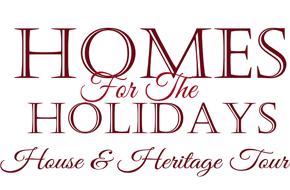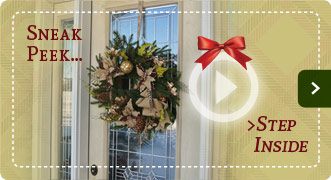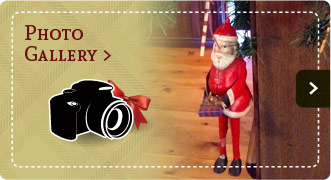Homes & Heritage Sites
2019 | 2018 | 2017 | 2016 | 2015
2017
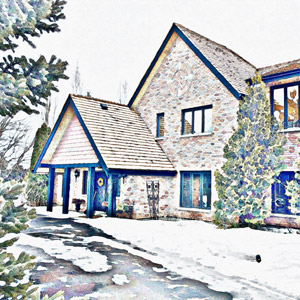 The Castle
The Castle
“We moved into ‘The Castle’ (as our neighbours refer to our home) in February 2008. The reclaimed red brick exterior, cedar shingles, high pitched roofs and tower makes it look like a mini castle.
Also known as ‘Kirk Castle on the Red River’ after the previous owners, it was built by a father as a wedding gift for his son and daughter-in-law in 1982/83.
The previous owners acquired an additional lot which made the property riverfront. They did a fantastic job of landscaping all 3 acres with mature trees and a park-like atmosphere. We love living here.
Originally from South Africa, we moved to Canada in November 1992. In South Africa, Christmas is hot: sunshine, blue skies, ocean and beaches. In contrast, our first white Christmas in Canada was absolutely magical! Bright, sparkling, dazzling, just like a true winter wonderland! Since then we have slowly become truly Canadian with our Christmas decor and traditions, trying to match the native born Canadians who seem to do Christmas so effortlessly beautiful.
Our mother tongue is Afrikaans, a Germanic language. In Afrikaans Christmas is ‘Kersfees’, meaning feast of candles or feast of Christianity. Our home at Christmas is filled with traditional lights and candles that shine like the star the Three Wise Men followed.
We are very happy to share our home on the Homes for the Holidays 2017 Tour with you. Please come inside and say ‘Geseënde Kersfees’!”
—Lisda & Johann Strumpher
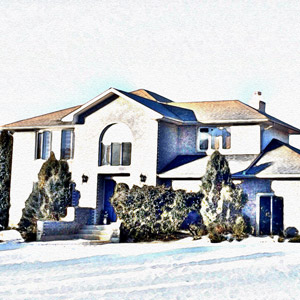 The Kumka Home
The Kumka Home
“In 1995 when our kids were teenagers we moved to 12 Schreyer Crescent to have more space to enjoy family life. Our home sits on a large lot with a spacious lawn, garden and fire pit that has been the gathering place for many family celebrations, including weddings and christenings.
The home is a traditional two-storey home with a living room, formal dining room and a big kitchen/family room area. Entering the home, a large curved staircase leads to the second floor, and a second spiral staircase sits in the kitchen at the back of the house. We also have a games room on the main floor with a billiard table and dartboard.
We love collecting art, so you’ll see original paintings inside by Armand Paquette and Russell Thomas. Paquette is known for his ability to capture life in Winnipeg’s north end in the early part of the last century, while Russell Thomas is an artist from Fort McMurray who uses bright, vivid colours to express the emotion of his subjects.
Karen loves to decorate for Christmas. In the past few years we haven’t had Christmas at home because our children now live in Québec and Alberta, which is another reason we’re excited to be involved with Homes for the Holidays. Please come and enjoy some Christmas cheer with us.”
—Irwin & Karen Kumka
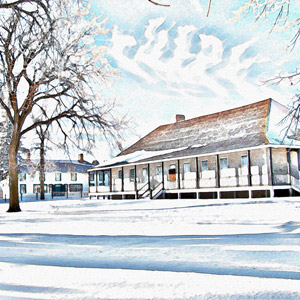 The Big House
The Big House
Lower Fort Garry National Historic Site of Canada
(House and washrooms are wheelchair accessible)Governor Eden Colville and his wife Anne invite you to an historic Victorian Christmas Eve celebration in The Big House at Lower Fort Garry. Here you will be warmed by the fires and delighted by the sights, smells and sounds of a traditional Red River Christmas in the mid to late 1800s. Sing Christmas carols around the 1810 pianoforte, view the delicious Christmas feast, and enjoy our beautifully decorated home filled with period antiques.
Built in 1831, The Big House at Lower Fort Garry NHS is a Federal Heritage Building. This Hudson’s Bay Company residence is composed of a main house and attached annex, and features hipped roofs and large stone chimneys. Stonemason Duncan McRae created elegantly detailed stone walls. The annex has stucco-clad masonry walls, large multi-pane sash windows and paneled doors.
Lower Fort Garry had many uses over its lifetime. It was a headquarters for the North West Mounted Police; Manitoba’s first penitentiary; a mental health hospital; and from 1913-1962, The Big House served as the clubhouse for the Manitoba Motor Country Club. In modern times, visitors from around the world visit and experience what life would have been like in the 1850s.
—Heather Beerling, Collections Specialist, Lower Fort Garry, Parks Canada
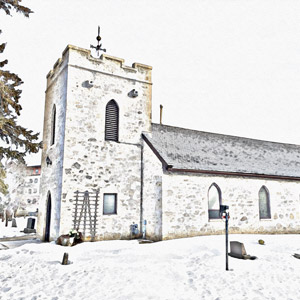 St. Clements Anglican Church and Hall
St. Clements Anglican Church and Hall
(Washrooms available in hall)
“St. Clements Anglican Church is south of Selkirk overlooking the Red River, and has served Selkirk and St. Andrews area residents since 1857. The first settlers built a school in which the first church services were held.
On June 2, 1860, Samuel Taylor began building a church on the current site. His diary describes building, plastering, and painting stages of the stone structure. St. Clements Church opened its doors on December 1, 1861 and Rt. Rev. David Anderson led its first-ever service.
The John West Bell was gifted to St. Clements Church in 1862 from St. John’s Cathedral in Winnipeg, and is now housed in the bell tower that was added to the church in 1920. For many years, St. Clements Church was the official chapel of Lower Fort Garry where ‘gallant gentlemen adventurers’ of The Hudson’s Bay Company and their ‘ladies in silks and satin’ sat in the pews each Sunday.
When Lower Fort Garry ceased to have an important position in The Hudson’s Bay Company’s trading, gentlemen and their ladies from the Victorian era moved away, and the church became the centre of the parish as it is known today.
St. Clements has a Church Yard (cemetery) with burials as early as 1840s and now includes over 9,000 interments. In honour of St. Clements Church’s 150th anniversary, a stained glass window was installed in the church’s northwest corner in thanksgiving for God’s mission and its outreach ministry. Also, St. Clements Church is home to a window by world-renowned artist Leo Mol.
We welcome you to take a step back in time and enter our stone structure church during this tour.”
—Archdeacon Godfrey Mawejje and the St. Clements Congregation
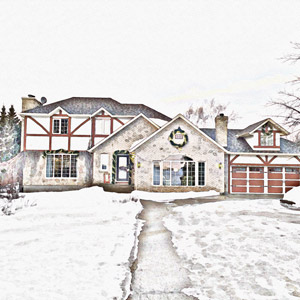 The Tudor Home
The Tudor Home
“We designed and built our tudor-styled home in St. Clements in 1981. We were the general contractors for the house building and also did some of the work ourselves such as insulating and dry-walling. The house interior is decorated in a warm and cozy country style which we enjoy.
Here, we raised our three boys, and enjoyed all the activity that brings. As we have a very large extended family we found we needed more space to entertain so began another building project in 2008. We turned the garage into a living room and renovated the kitchen to have a long granite island which is perfect for potluck dinners. We enjoy having family and friends over and hope they enjoy it as much as we do.
We love to decorate our home for the holidays and Alvin especially enjoys decorating the exterior of the house and the yard early in the season. We welcome tour goers into our home this holiday season as a way to fundraise for affordable housing projects like Nova House Women’s Shelter and the Homes for All Fund.”
—Alvin and Betty Kreviazuk
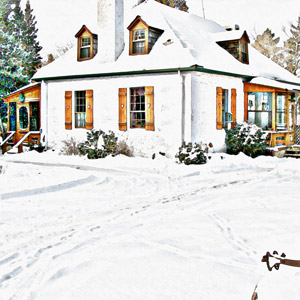 The Bunn House
The Bunn House
The Bunn House was on our first tour in 2015, and it’s back this year by popular demand!
“For the past 71 years, the Stewart family has had the privilege of enjoying the home of Thomas and Rachel Bunn. Thomas Bunn represented this area on both Louis Riel’s Council and the first Manitoba Assembly.
Bunn built this stone house for his wife on the banks of the Red River in 1862, after being flooded out in Winnipeg’s 1852 flood. Crafted after the Lower Fort Garry style by stone mason Samuel Taylor, this house is a historic landmark of our Red River community.
There are a number of local artefacts in the home, many significant to the Red River area plus a number of pictures that portray the history of the Selkirk and district community.
As a family, we enjoy sharing this heritage treasure with others through our Bed and Breakfast business and local tours. In fact this is our second time on the Homes for the Holidays Tour, brought back by popular demand.
We are pleased to showcase the home as it might have been for the Christmas season in 1862. What an excellent opportunity to share our home and support a very worthy community project like the Homes for All Fund at the Selkirk & District Community Foundation.”
—Beverley & Fraser Stewart
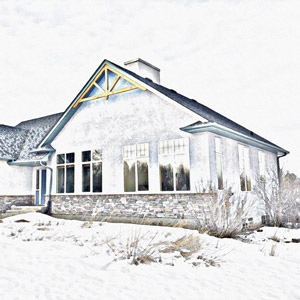 Prairie Originals Home
Prairie Originals Home
“This property is more than our home base, it’s our homebased business too — Prairie Originals, where we grow wild flowers and plants for sale from our nursery.
In 2005 we built our 2,200 square foot geothermal home — a natural way to heat a home — on this five acres of land. Our backyard is bursting with perennials, birds, bees and butterflies in a field filled with plants like sweetgrass, woodland wildflowers, violets, wild iris, and milkweed — the only host to the Monarch butterfly.
The prime time to experience our own little ecosystem is in the summer, but rest assured we have prairie and butterfly-themed decorations to dress up our home for your visit.
Our whole house is decorated with the natural world in mind. Our gazebo is birdfeeder and garden themed, our sunroom is prairie themed with butterflies, and we’ve decorated with dry arrangements and butterflies throughout the house.
We’re living on a historic road named after Thomas Bunn, who represented this area on both Louis Riel’s Council and the first Manitoba Assembly for St. Clements from December 1870 until he died on April 11, 1875. His home is also on this tour, just down the street from us.”
—Shirley & Gord Froehlich
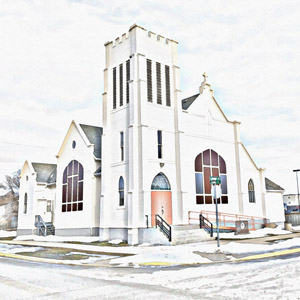 Evangelical Lutheran Church and Hall
Evangelical Lutheran Church and Hall
“At 130 years old, the Lutheran Church is a Selkirk staple. Icelandic settlers founded their church on June 9, 1889. Rev. F.T. Bergman conducted the church’s first service on November 6 that same year.
The first church only stood for seven years before it was torn down in 1896. A second church, built mostly from volunteer labour, lasted until the morning of September 7, 1919, when it was struck by lightning and burned to the ground.
Construction for the third — and current — church didn’t begin until May 20, 1924. In the five years in between, churchgoers attended services in the hall next door to the church. Finally, on October 12, 1924, the church, which cost $12,000 to build, was dedicated and continues to be active since then.
In celebration of Canada’s 150th anniversary, the church’s Icelandic choir is performing during Homes for the Holidays. Come sit, rest and listen.”
—Rev. Stanton Richards and the Evangelical Lutheran Church’s congregation
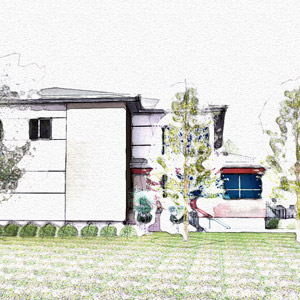 The Secret Home
The Secret Home
“Our 9,000 square foot home has been in the planning for over a decade. On any given day 22 of us, including children, make this house our home.
We just moved in this year, after our former site became too cramped and run-down with frequent and expensive repairs. That old home was a former church hall converted into bedrooms in the 1980s, which as you can imagine wasn’t ideal. Our new home was designed and built just for us. The house is three floors with six bedrooms, four apartments on the third floor, and a massive kitchen and kids’ playroom and yard.
The architects and interior designers of ft3 have done an amazing job. Our friends at Pineridge Hollow consulted on and provided the furnishing. And just for this tour, Pineridge has also helped us with the Christmas decorations.
We’re keeping our house name a secret until you arrive. But here’s a clue: Homes for the Holidays tourists like you were the fifth largest contributor to the construction of this Secret Home. Thank you and welcome.”
—From the patrons and staff of the Secret Home
